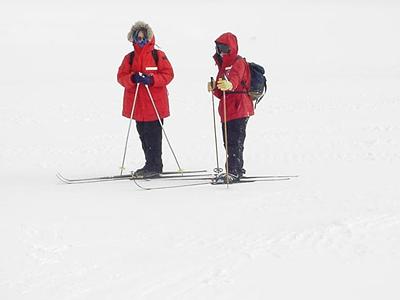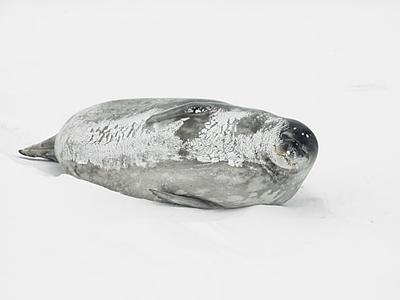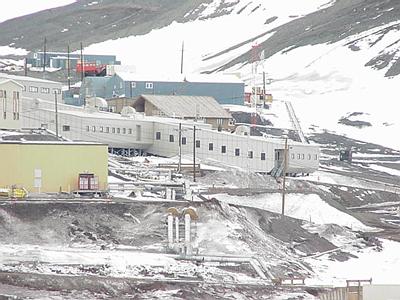21 November, 1999
Today was Sunday and we used the day to play and enjoy where we are. Several
members of our team rented skies and went out on the sea ice to stretch out
legs. We took the bus over to the New Zealand station (Scott base) and then
took out over the sea ice, to find our way home.
It is a strange thing to cross country ski for miles and never come to a
hill. In the Sierra Nevada Mountains at home, every thing is either up or
down, here every thing is flat. The skiing was great; the snow was crusty
and crunchy under our skis. In the distance were the Royal Society Range of
mountains, but we could just see the tops above the cloud cover. To one
side we could see the Ross Island peninsula with the base warm and cozy and
waiting for us to come back for hot drinks.
Out here we were in the most exposed of environments, the vastness around us
made us feel small and vulnerable. We felt way out there, but in fact we
carried a radio in case of emergencies and we had checked out with the
firehouse dispatch before we left. If we do not return before the stated
time they send a search and rescue (SAR) team to look for us. Antarctica is
not a place to take chances.
Along the way we found a native of this isolated land. He winked at us, but
didnít move. Canít help but wonder what he was thinking of these strange
red-coated beings running around taking pictures. Maybe he was worried we
ate seal.

Jessie and I out for our adventure. To go skiing in Antarctica we need full extreme weather gear (EWG). On the ice the wind blows and with so much snow swirling around, we need to protect ourselves. On this day the sun did not shine but it was beautiful anyway. It is strange to look around us and see nothing but white.

We have taken the shuttle over to Scott Base, which you see in the background. These buildings are the only green things we see in Antarctica. A nice break from our "whited out eyes". Noel brings up the rear of our group as we head out to the sea ice and find our way back to Mcmurdo.

This Weddell seal (Leptonychotes weddelli) was a female, and like all mammals is a warm-blooded air breathing animal like us. One of four species of seals found in Antarctica she is well suited to this harsh environment. To maintain body heat she has a thick layer of blubber under her skin which is also covered by warm hair. Floppy and slow on the ice she is fast and streamline in the water where she needs to be an expert swimmer to catch her food, mainly fish. Baby seals are born in the Antarctic spring when the mothers come out onto the ice and give birth. The babies must adapt immediately to the harsh cold as they come from the environment of their mothers, 37oC, to the ice where it may be as low as -20oC. To learn more about these creatures visit the web pages below. http://webdirectory.com/antarctica/weddell.html http://www.greenchannel.com/tec/species/weddell.htm http://www.greenchannel.com/tec/species/species.htm

Isn't she cute?

Finally we are back at Mcmurdo. The large building is Crary Lab which houses the offices and laboratories of the scientists. A great place to work. Everyone here works very hard at their jobs, but today was time for a break. It was good to get away from the station and ponder where we are.
Contact the TEA in the field at
.
If you cannot connect through your browser, copy the
TEA's e-mail address in the "To:" line of
your favorite e-mail package.
|
